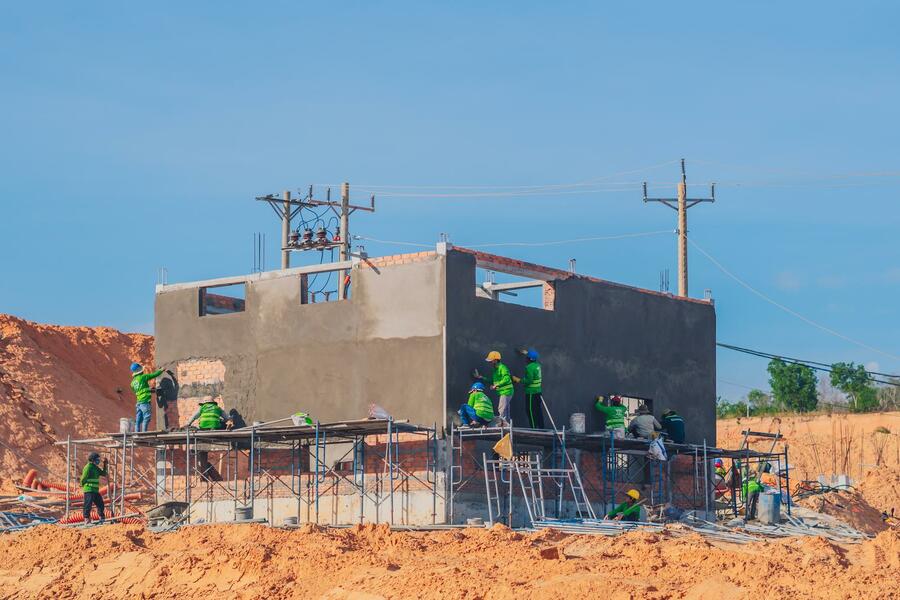In my last column for CREW, I explained the advantages of diversifying your portfolio with private equity investments. This time around, I’d like to talk about my wife’s and my first foray into the space. Hopefully our overwhelmingly positive experience will encourage you to look at private equities a little more closely.
The first private equity product we considered was a condo construction finance deal. This, in effect, made us partners with a leading property developer in the GTA. The premise behind these products is quite simple: residential subdivisions, condo towers and mixed-use projects are designed, built and sold much the same way as any other product, but the funding comes from investors, who are often attracted by the built-in and predictable profit margin. Here are the main aspects of a finance deal like ours:
1. Cash is king
Property developers often find it more financially attractive to seek investment partners to advance the funds and secure appealing land for development. Developers enjoy the same benefits of leverage as we do, committing 20% from their cash reserves (like a down payment) and raising the remaining 80% from individual investors to close the deal. In this case, individual investors act much like the bank, but with one key difference. The entire deal is funded with cash, which avoids unnecessary leverage risk.
2. Location, location, location …
Sites are chosen to match the right product (houses, towers, etc.) with the right parcel of land, depending on regulatory requirements and the character of the surrounding neighbourhood. Very detailed work is completed to service the land and ensure the project is onside with all zoning rules; otherwise, the land purchase and construction can’t move forward. The project is designed, priced and then marketed to investors in the context of the local market.
3. The right price
Pricing is half art and half science. The price per square foot of each offering must make sense in the context of the market. Market conditions and the value of real estate and similar projects nearby will define a competitive offering. Priced right, these private equities should return approximately 20% in annualized returns, but nothing is guaranteed.
4. Structural integrity
The structure of a construction private equity might take the form of a mutual fund trust or a limited partnership. We found this appealing, as we had already taken on enough risk when we purchased our individual properties and wanted to make sure we didn’t become over-leveraged. Our risk exposure in either structure would be limited to the amount we invested and nothing more. We also liked the chance to be a part of a property far greater in size than one we could afford and with a projected exit date.
5. The process
Once the land purchase closes, a selling centre is opened, and then the project is promoted to the public. You’ve likely seen several of these campaigns in newspapers, on billboards and online. The project is then managed through the construction and closing process.
Once the project sells 70% of all units in the pre-construction selling period, it then becomes eligible for construction financing and actual construction. The remaining 30% of unsold inventory is released for sale at (hopefully) substantially higher prices as the project proves its market appeal.
The difference in selling price is realized as time elapses and can be attributed to a rise in the value of the underlying land and surrounding real estate (existing, new and under construction). Hot projects might sell out when first offered, but that wouldn’t be the norm. Developers will always seek to maximize their profit margin whenever and however they possibly can. The process is simple in design but quite challenging in execution.
Once construction financing has been secured, it’s common for the project to issue a full or partial repayment of the invested capital. Investors then wait for their ‘profits’ until the project is complete, all residents are in possession of their units and the relevant accounts have been settled. Deal structures vary, depending on what is being built and the size/complexity of the project, and can range between two and 10 years.
6. What are the risks?
Projects don’t always sell. The economy can turn like it did in 2008, when several building projects were placed on indefinite hold. Liquidity – or, more precisely, the absence of it – is also a concern here. There is no regular rent or interest payment to help cover your costs. Investors need to be committed to hanging on until the project is complete, which might impact the settlement of estates in the event of death, divorce and bankruptcy of an investor. That’s why these deals are usually sold to more sophisticated investors or according to new rules that help smaller investors take part without overcommitting.
This is not buy-and-hold real estate. You’re building a 40-storey widget for sale, and there’s no guarantee it will sell, exit on schedule or sell for the price you expect. To date, we have exited two deals and continue to hold 12 projects. They have performed exactly as structured. We have been very fortunate and remain committed to both the structure and the partners we selected.
These investments can be held in non-registered or in fully registered accounts such as RRSPs, RRIFs and TFSAs. A minimum investment (usually $25,000) is required for qualified investors. Projects are often over-subscribed, and we found we needed to move quickly if interested. Often our requested allotments have been scaled back – similar to initial public stock offerings for the most popular new issues.
While past performance is certainly no guarantee of future results, our private equity construction deals have been an important part of our investment strategy. We’ve been fortunate to find the right investment and developer partners who take a disciplined approach to underwriting and risk management.
Thinking of real estate as a product to be manufactured and sold, with ‘built-in’ profits and pre-determined exit dates, is a new way of looking at real estate investing and can help build your nest egg in ways you might not have imagined. It certainly worked out that way for us.

Bob Carter is a real estate investor with more than 35 years of sales and business ownership experience. He built a successful financial advisor practice on Bay Street and today serves as a vice-president of sales for a leading Canadian life insurance carrier. To connect with him, visit catchupinvesting.ca.








